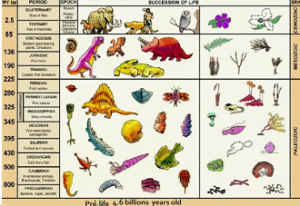
Arquivo para March 4th, 2021
The noosphere: from primary matter to complexification.
Teilhard Chardin thus describes the complexification from the first developments of life, the critical transition from the life of cells to an ultra-complex life:
first developments of life, the critical transition from the life of cells to an ultra-complex life:
“We will probably never find out (unless, luckily, the science of tomorrow manages to reproduce the phenomenon in the laboratory) – History alone, in any case, will never directly discover the material traces of this emergence – appearance – of microscopic out of the molecular; from the organic out of the chemical, from the living out of the pre-living. ” (Chardin, 1965, p. 63)
Although it may seem that nature would have done this preparation alone, it draws attention to the essential originality of the cell, producing something entirely new, and composing an organic multiplicity in a minimum space, although the process may have taken years, each cell has long been prepared to be something original.
It will be through discreet but decisive mutations that occurred for thousands and millions of years, that the complexity of cells and living beings began to be formed, making it possible to perceive “the irresistible developments that are hidden in the weakest slowness, the extreme agitation that is hidden under the resting veil, the entirely new that insinuates itself in the monotonous repetition of the same things ”(Chardin, 1965, p. 8).
It was through the complexification of life that the human emerged, in the beginning God made it from inorganic materials, metaphorically the Bible says about clay, but it is certain that the universe was born before.
So the world of physis (Chardin sees physics in the Greek sense of the word) would be linked to biology, and thinks:
“Could we hesitate for a moment to recognize the evident kinship that links, in its composition and aspects, the world of the proto-living to the world of physical chemistry? I mean, are we not yet, in this first stage of life, but at the core, at least on the very edge of ‘matter’? ” (Chardin, 1965, p. 66)
At the birth of human life, after billions of years after the formation of the universe, a great and decisive mutation will occur, the birth of thought and consciousness, and what Chardin calls interiorization, which in religious terms means the individual soul that is also linked to the collective, the principle of association from the first cells.
The thought and the conscience the notion of person develops, this experience was given thanks to the cerebral development of man, and to the developments of what Chardin calls the Noosphere, the last stage after the Biosphere, the creation and development of life.
Developing and explaining the Chardanian cosmogenesis is a long process that not even fully developed in life, many advances in current astrophysics (many discoveries try to explain the origin of life) help understanding, what is important to emphasize is that the evolution panorama cosmos, not just the Earth, is linked to the development of human consciousness and capacity to connect with the harmony of life.
Chardin, T. (1965). O fenomeno humano (Phenomenous Human). BR, São Paulo : Herder.

